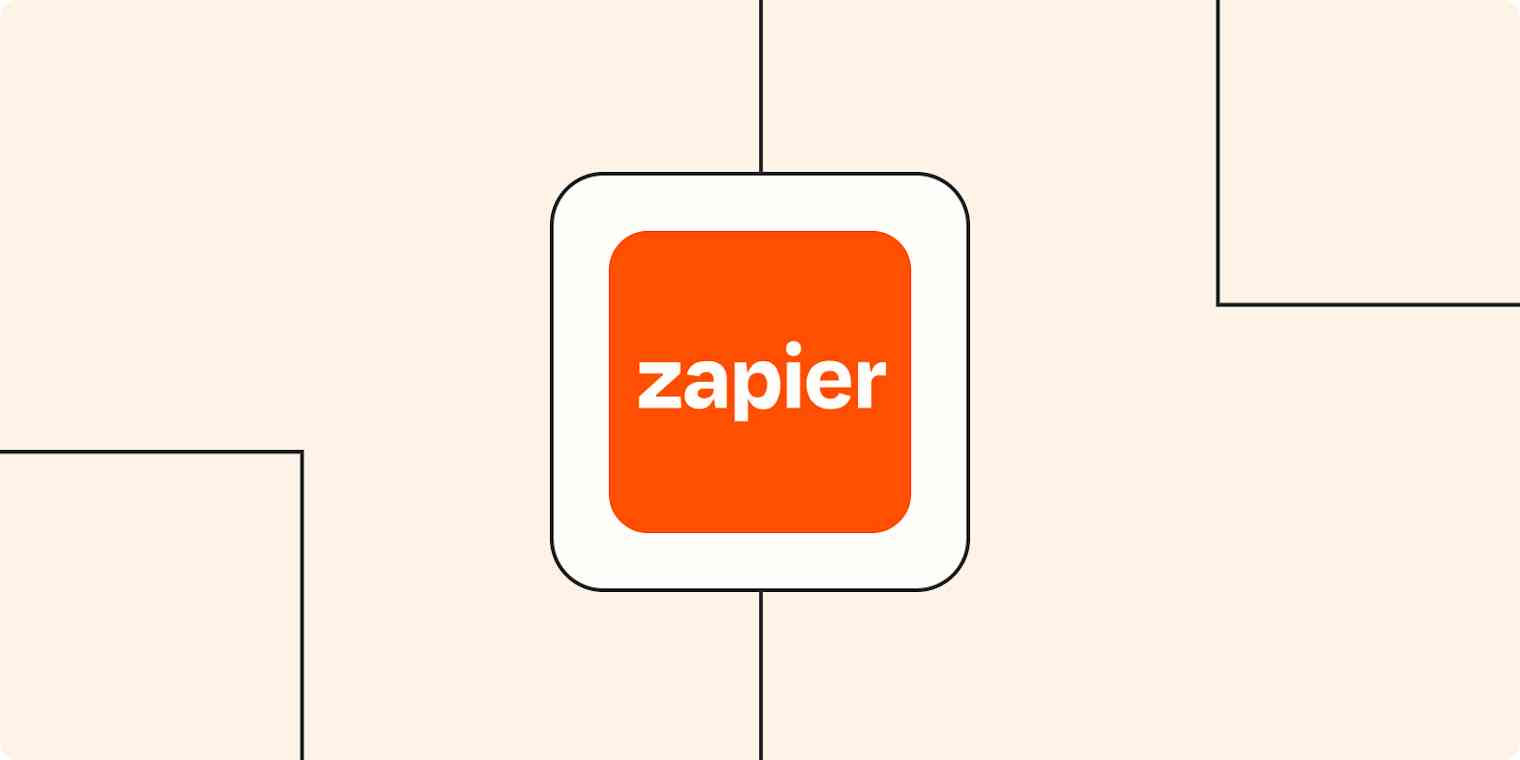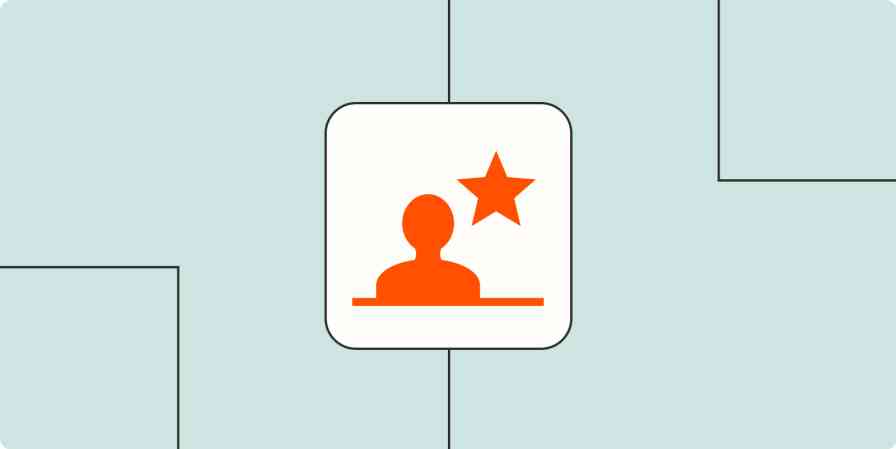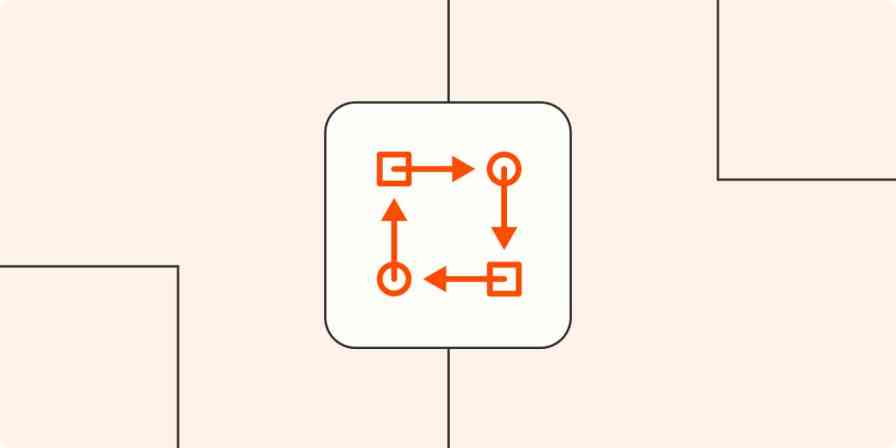For many, automation is already a workplace reality. And it's catching.
Its growing popularity is thanks to the scale at which it can complete thousands of tasks automatically. As tech companies seek ways to meet rising demand, integrations are the new building blocks to a better user experience.
Yet building an integration (and getting it up and running) isn't enough. Not if you want your users to discover the automated workflows they can create right away and where they'd expect to find them—inside your UI.
It's all too easy for your customers to hit a dead-end when trying to connect their favorite tools if it's not immediately clear you can support their needs. In fact, according to a survey we conducted with knowledge workers in 2019, 73% use a variety of software they wished worked better together. And 81% actively look for solutions that help share information from one app to another.
That's exactly what Zapier's suite of embed tools can solve. Below we'll cover a full rundown of all the tools you can use to embed Zapier into your product (and meet your users at their point of need).
Embedding Zapier into your product
Customers today have a real "use it or lose it" attitude towards apps. If your product doesn't deliver on value, they'll stop paying for it.
Embedding your Zapier-powered integration into your UI gives your product an added value. In turn, your customers can discover and build the workflows that grow their business—churning less and upgrading more.
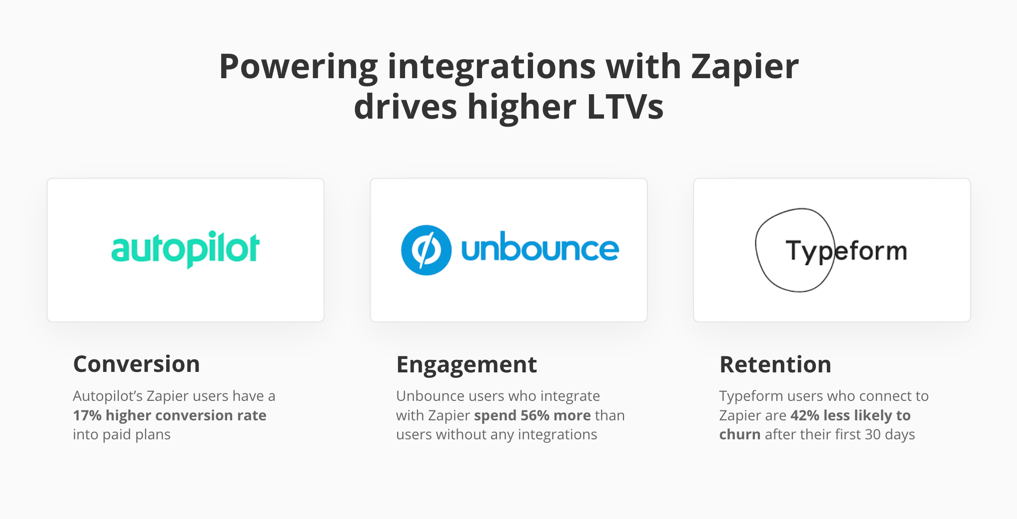
By embedding Zapier into your product, your users can easily connect the apps they're already using and find ways to do even more with your app—without leaving your product UI.
Here's a rundown of the embedding tools we offer and the impact our partners have seen from prioritizing this work. Click a link below to learn more about each embedding tool:
Zap templates: Build ready-made workflows for your users
Regardless of which embedding tool you decide to use, you'll need to build a few Zap templates first.
Zap templates are ready-made workflows with the apps and core fields pre-selected for publicly available Zapier integrations. In just a few clicks, they help people discover a use case, connect apps, and turn on the Zap. They're the fastest way for your users to automate workflows with your app.
To create a template, you simply choose the app you want to pair with your app, then map out each Zap's steps by filling in the required fields. Then all your user has to do is select the template, and they'll be guided through the setup process. All of your Zap templates are also included on your Zapier app directory page so users can easily find them.
Tip: The ability to build and publish Zap templates is only available if your Zapier integration has a beta tag or has officially launched and become a part of the Zapier Integration Partner Program.
Want to learn more about creating Zap templates? Check out our partner documentation or create your own custom embed here.
Zap Template Element: Embed Zap templates anywhere in a few minutes
"Zapier's embed tools help Keap put integrations right where users expect to find them." - Stephanie Kelman, Product Marketing Manager at Keap
Once you have a library of Zap templates, the Zap Template Element Generator allows you to easily surface them with a short snippet of code.
You can paste this snippet anywhere to dynamically display the most popular Zap templates for your app. You can exhibit them anywhere—across your help documentation, in blog posts and onboarding emails, on your integrations or FAQ page, and more. Just think about what makes sense contextually (that is, where your users would expect to connect to another tool).
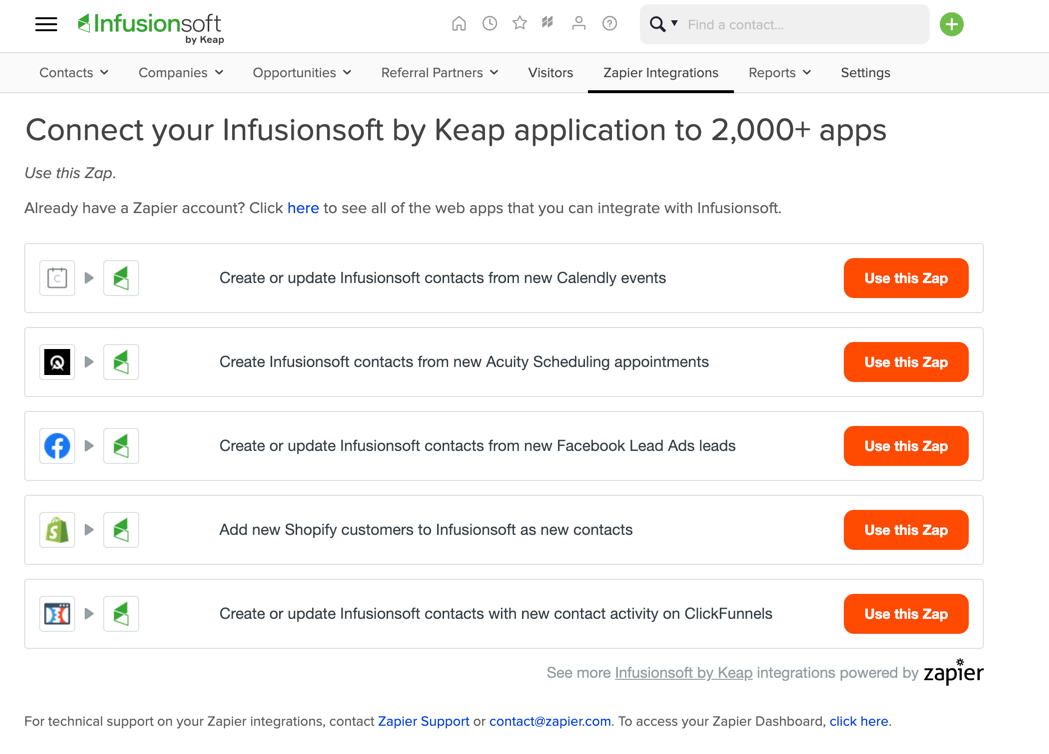
The Zap Template Element is the quickest way to get an embedded Zapier experience up and running for your users—it takes just a few minutes and doesn't require any design resources.
Tip: Want to embed specific Zap templates instead of grouping by most popular? Copy the Zap ID number from your Zap templates dashboard by clicking the gear icon beside a Zap and selecting the Copy ID option.
Get started by generating your Zap Template Element.
Zapier's Partner API: Customize your in-product experience with flexible styling options
The Partner API helps you exhibit your best Zapier use cases exactly where it's most helpful: Within the flow of your app. With the Partner API, you can feature your integration inside your app without sacrificing your product's look, feel, and flow. To see what we mean, let's take a look at the three tools powered by the Partner API.
App Marketplace
Prospects want to know their favorite tool seamlessly connects with your app.
As a Zapier partner, you already rely on our library of thousands of apps to serve your users' needs. But using Zapier's Partner API makes this collaboration visible to anyone who lands on your site. That way, when a user searches for a business-critical app that you don't natively support, they find a path forward in your directory, rather than a blank page. This reassurance helps nudge users to sign up or to upgrade their plan.
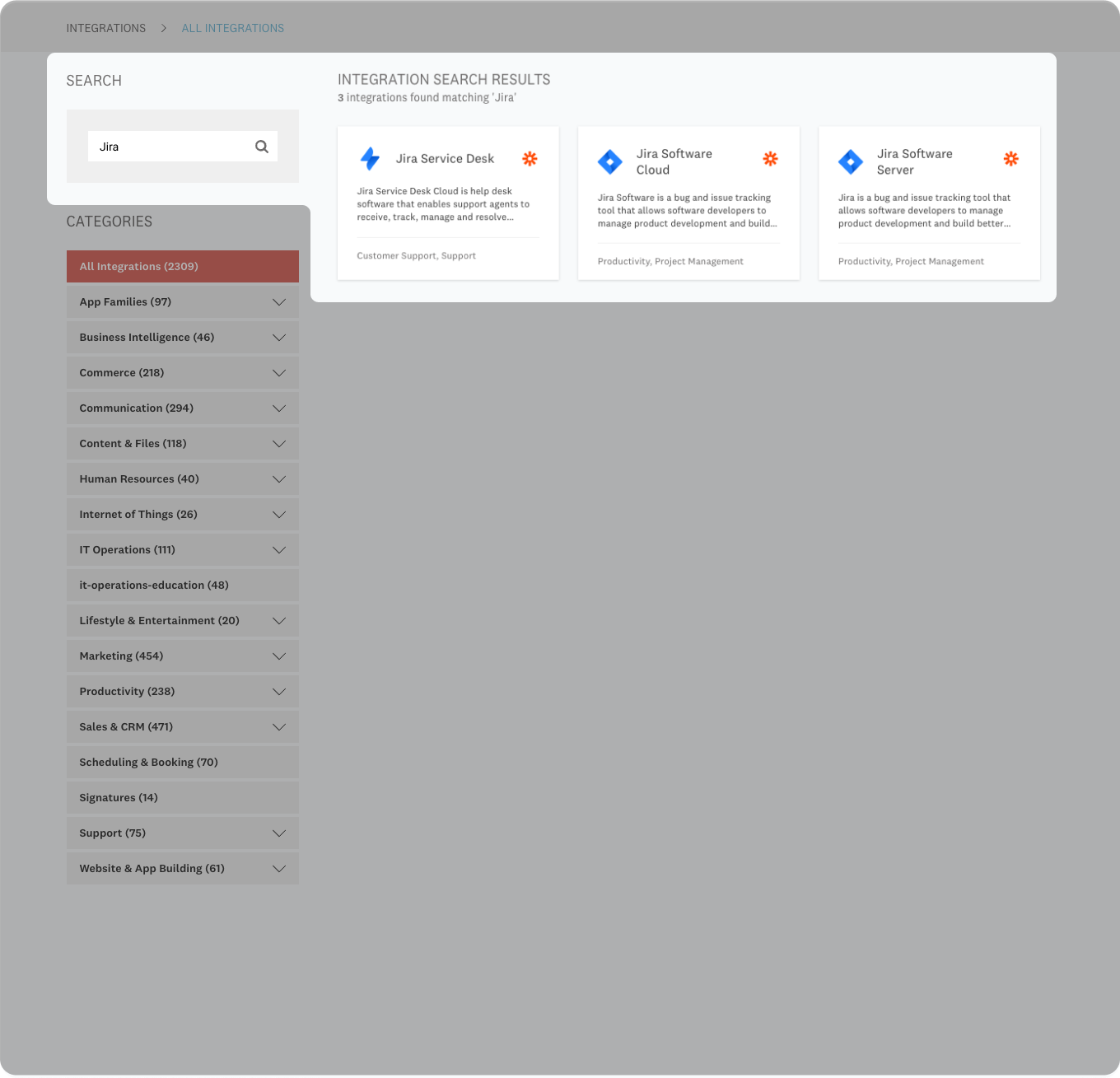
The API returns a list of all the apps available in Zapier's app directory so you can show your users all the integration possibilities.
Of course, if you don't want to show users everything, that's not a problem, as the API can also return apps by category. Show all of the available apps (like the example from Wufoo below) or only show the categories that are most relevant to your users.
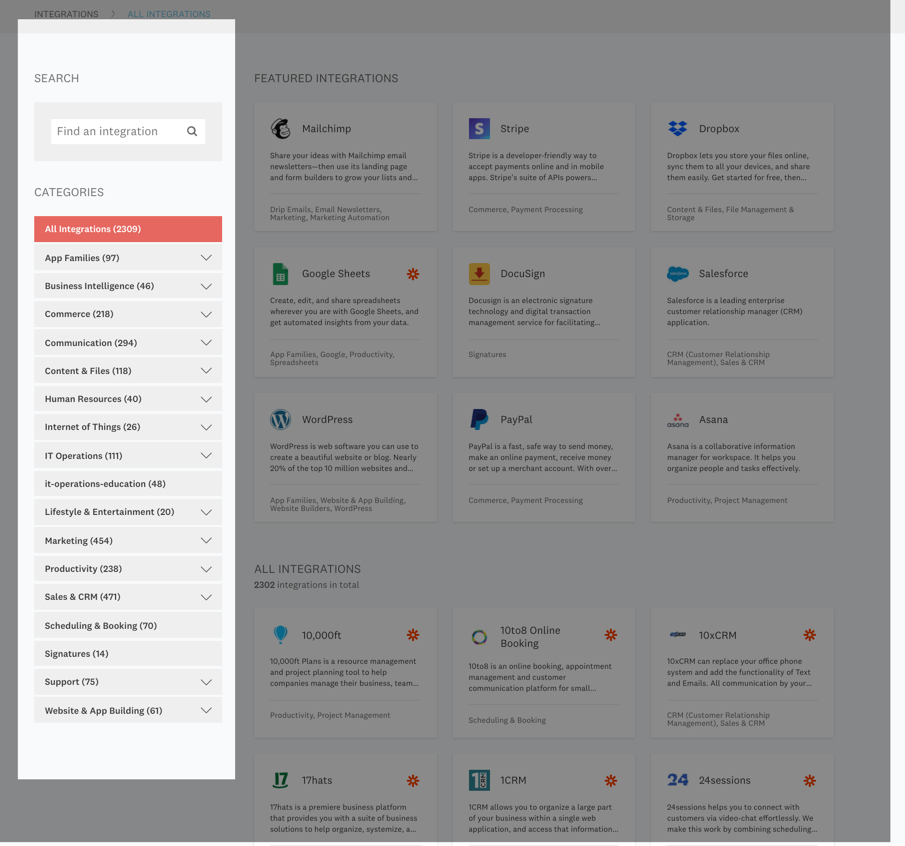
It also returns the app name, logo, app description, related Zap templates, and app page link. Dynamically populating your marketplace eliminates the need for manual maintenance of directory listings. Because as our library of apps grows, yours does, too.
Tip: You can extend the apps displayed in your marketplace by tapping into the GET/v1/apps endpoint of the Partner API. Learn more.
Embedded editor
Powering your app marketplace with Zapier's Partner API shows users that you can support their workflows. But there's additional functionality: enabling them to start building automated workflows directly inside your product.
When you embed the Zapier editor in your product, you empower users to build automated workflows right at the point of need, without ever hopping out of your UI.
Inside Facebook Lead Ads, for example, users search for the CRM they want to send their prospects to. If they select an app that's powered by Zapier, the Zapier editor appears in an iFrame and guides users through the entire setup, step by step.
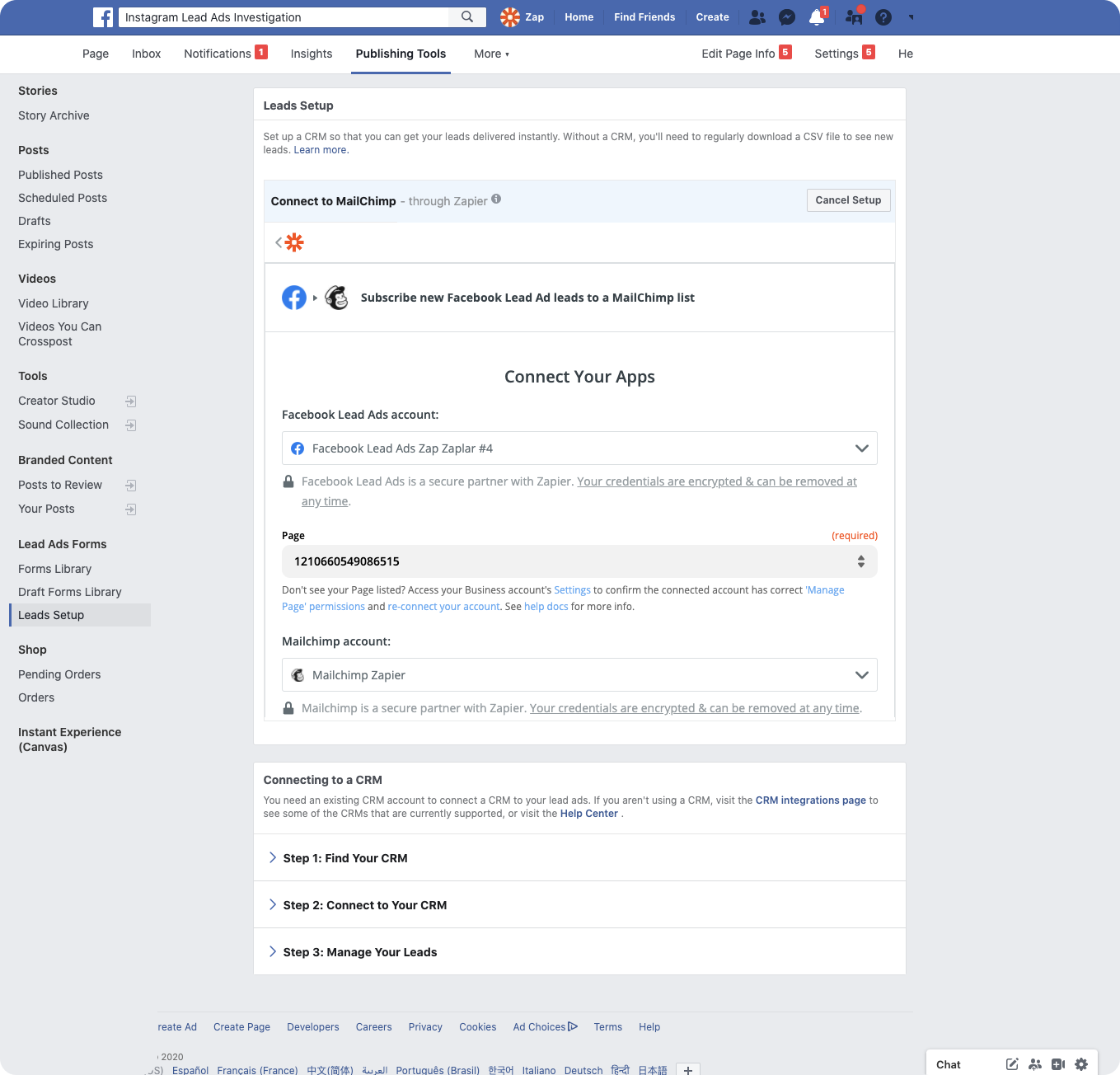
Tip: As we block the iframe embed by default (it's more secure), you'll need to provide Zapier with a list of domains you intend to embed Zapier in. Get started here.
Manage my Zaps
To create a seamless automation experience, you can allow your users to manage their Zaps from an embedded panel inside your product—see which Zaps are up and running, and toggle them on and off from within your UI.
Take Unbounce, for example. Unbounce treated our suite of tools like a menu, picking and adapting the solutions they needed to best help their users. To illustrate this point, let's take a look at the way Unbounce uses the embedded editor.
For a seamless setup, Unbounce users can build Zaps from an embedded editor.
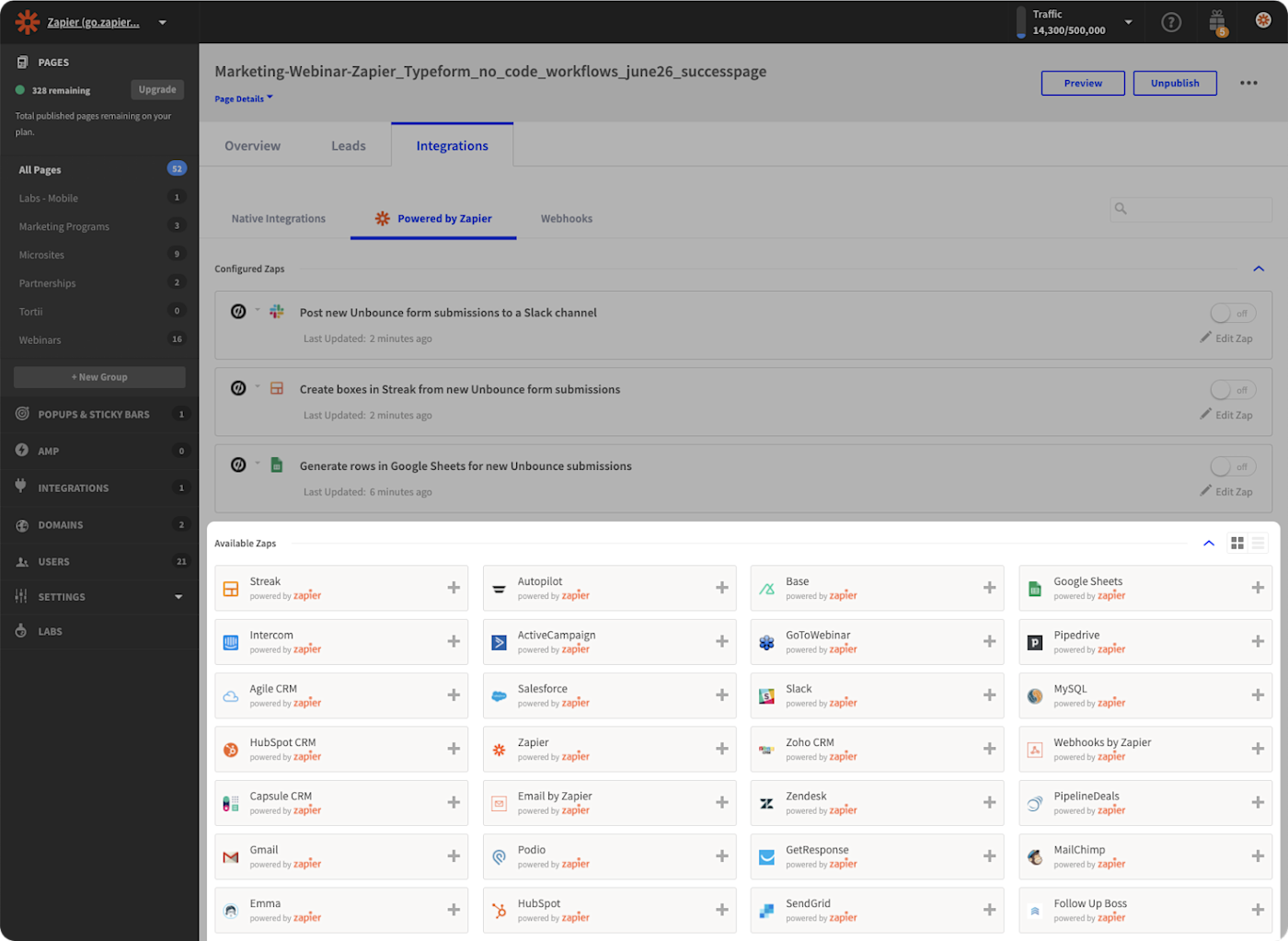
They can easily see which Zaps are up and running on a form. Users can also turn these workflows on or off without leaving the Unbounce dashboard.
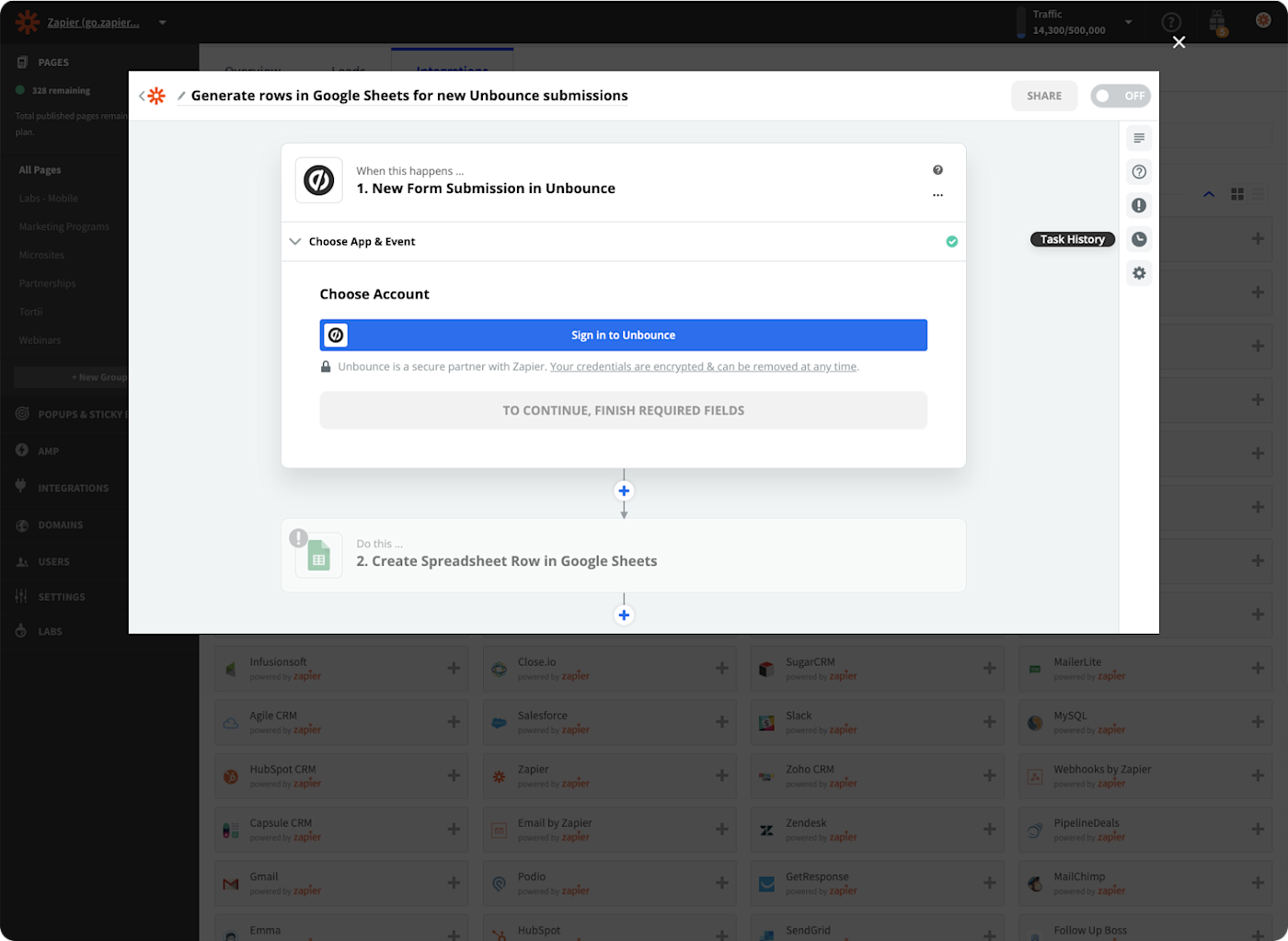
This strategy unlocked 56% higher revenue per user. Today, to build on this momentum, Unbounce uses the Partner API to create more in-product access points.
Tip: You can recreate Unbounce's experience by tapping into this endpoint: GET /v1/zaps. This returns all Zaps from a user's account that include your app, enabling users to see which Zaps they've created with your app and manage them without having to hop over to Zapier.com.
You can find out more about the Partner API in our partner documentation, or if you already have an app on Zapier, retrieve access to the API in the developer platform.
Want to reduce churn and accelerate growth as an automation tool on Zapier? If you're here to join Zapier's Partner Fast Track program, let us know which embed tool you're planning on using with the form below. That way, we can start unlocking your perks.
